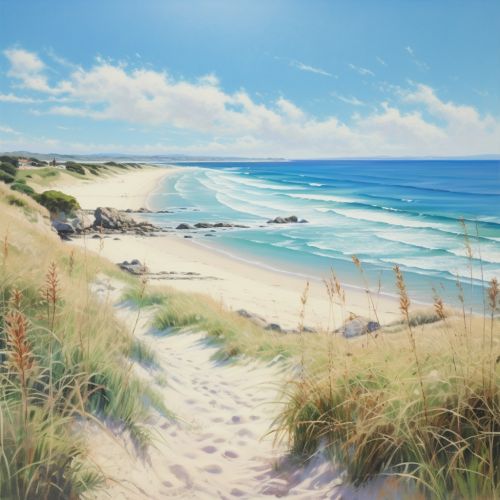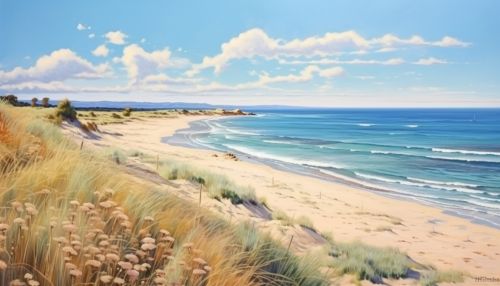Coastal geography
Introduction
Coastal geography is a branch of geography that focuses on the dynamic interface between the ocean and the land, incorporating both the physical geography (i.e., coastal geomorphology, geology, and oceanography) and the human geography (sociology and history) of the coast. It involves an understanding of coastal weather patterns, ecosystem dynamics, and the processes by which the coast changes over time.


Physical Coastal Geography
Physical coastal geography primarily involves the study of coastal topography and processes, which includes understanding the formation and change of coastlines, coastal features, and sea levels.
Coastline Formation and Change
Coastlines are formed and changed by a combination of sea level changes, wave action, and sediment deposition and erosion. These processes are influenced by factors such as climate, geology, tides, and human activity.
Coastal Features
Coastal features are diverse and include beaches, dunes, cliffs, deltas, estuaries, and lagoons. These features are formed by the interaction of the sea, wind, and human activity.
Sea Level Changes
Sea level changes, both global and local, have a significant impact on coastal geography. Global sea level changes are primarily due to changes in the volume of the world's ice and ocean water. Local sea level changes can be caused by local geological processes such as subsidence or uplift.
Human Coastal Geography
Human coastal geography is concerned with the study of the societal, cultural, and economic aspects of the coast. This includes the study of coastal settlements, coastal economy, and the impact of human activity on the coast.
Coastal Settlements
Coastal settlements have a long history, with many of the world's oldest and largest cities located on the coast. These settlements have been shaped by their relationship with the coast and the sea, which provides resources, transportation, and strategic advantages.
Coastal Economy
The coastal economy is diverse and includes sectors such as fishing, tourism, shipping, and energy production. The coast also provides important ecosystem services, such as nutrient cycling and coastal protection.
Impact of Human Activity
Human activity has a significant impact on the coast. This includes coastal development, pollution, and the alteration of coastal processes and ecosystems. The study of these impacts is crucial for coastal management and conservation.
Coastal Processes
Coastal processes are the physical and chemical phenomena that shape the coast and its ecosystems. These processes include wave action, tides, sediment transport, and chemical processes.
Wave Action
Wave action is a key process in coastal geography. Waves are generated by wind blowing over the surface of the sea, and their size and energy are influenced by the wind speed, duration, and fetch (the distance over which the wind blows).
Tides
Tides are the rise and fall of sea levels caused by the gravitational forces exerted by the Moon and the Sun and the rotation of the Earth. Tides influence coastal processes such as sediment transport and erosion.
Sediment Transport
Sediment transport involves the movement of sediment by waves and currents. This process is crucial in the formation of coastal features and the change of coastlines.
Chemical Processes
Chemical processes in coastal geography include the interaction of seawater with the atmosphere, the land, and the sea floor. These processes influence the chemistry of the sea and the distribution of nutrients and pollutants.
Coastal Ecosystems
Coastal ecosystems are diverse and include both terrestrial and marine ecosystems. These ecosystems provide important habitats for a wide range of species and are crucial for biodiversity.
Beaches and Dunes
Beaches and dunes are dynamic ecosystems that are shaped by the interaction of the sea, wind, and human activity. They provide important habitats for a range of species, including birds, insects, and plants.
Estuaries and Lagoons
Estuaries and lagoons are transitional areas between the land and the sea, where freshwater and seawater mix. These ecosystems are highly productive and provide important habitats for a wide range of species.
Coral Reefs
Coral reefs are marine ecosystems that are found in the warm, shallow waters of the tropics and subtropics. They are one of the most biodiverse ecosystems on the planet and provide important ecosystem services, including coastal protection and tourism.
Coastal Management
Coastal management involves the management of the coast to balance environmental, economic, human health, and cultural resources. This includes the management of coastal development, pollution, and the conservation of coastal ecosystems.
